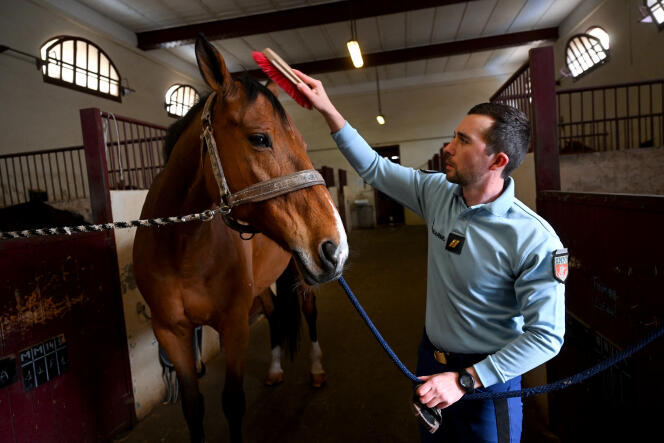The privileged few invited to enter under the wooded nave of the Sénarmont riding school, attached to the Château de Fontainebleau (Seine-et-Marne), are still only a handful per year. The former kennel of François Ier (1494-1547) plans to open its doors today. The army wants to create the first museum there retracing the epic story of the horse in its ranks. The Fontainebleau Military Riding School has already begun to classify and list thousands of collector’s items: fittings tracing the evolution of farriery since the 18th century.e century, veterinary equipment, saddles… and dozens of Olympic medals.
Decimated in 1914-1918 with a million equines killed, still mobilized despite motorization during the Second World War, the war horse never left the ranks of the army, but was converted into a sportsman high level. “Breeders were very dependent on horse purchases made by the army. Suddenly stopping them after the war would have put the entire industry in difficulty”recalls Colonel Jérôme Arnauld of the Lions, veterinarian for twenty-nine years in Fontainebleau, now responsible for veterinary services at the Military Riding School.
Trained in the army’s twenty equestrian sections, the military horse will rise to the Olympic heights. Until 1948, army riders were even the only ones authorized to represent France at the Olympic Games. They will glean dozens of medals there. Even today, riders from Fontainebleau or the Cadre Noir school in Saumur line up in the most prestigious international competitions.
Psychological support
The fifty young horses purchased each year, to maintain a herd of close to 500 mounts (to which are added 500 horses from the Republican Guard), are chosen with the greatest care. “In 2022, 103 came here for veterinary tests. We only kept 53”testifies Frédéric Duprez, lieutenant-colonel in charge of the Fontainebleau military riding school.
The 180 horses in its stables are not reserved for experienced riders. Physical preparation and hardening always involve riding lessons like in Saint-Cyr, where the educational program includes hours on horseback.
The army has also adopted equicoaching techniques. “The reactions of a rider, but also those of the horse under his saddle, are always an excellent means of observing the person”, remarks Frédéric Duprez. For several years, horses have also been used to support and “reconstruct” the injured. Their resocialization can begin with an animal. “We don’t treat, but we work for well-being, specifies Frédéric Duprez. Even brushing an animal can be extremely beneficial for a psychologically injured person. »
You have 10% of this article left to read. The rest is reserved for subscribers.
